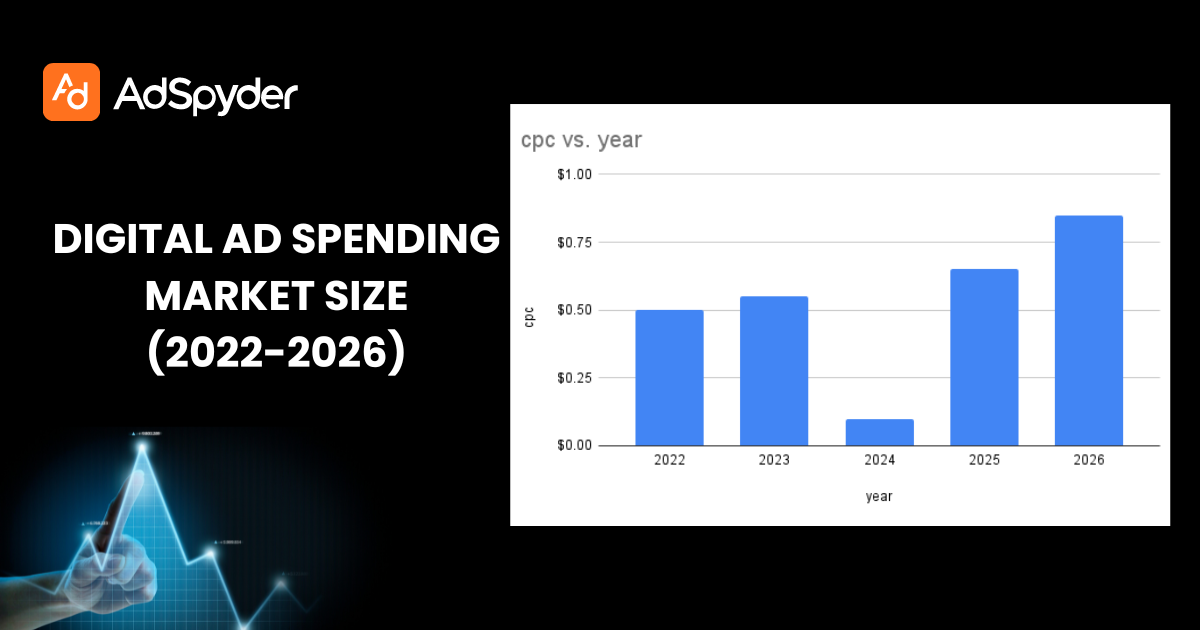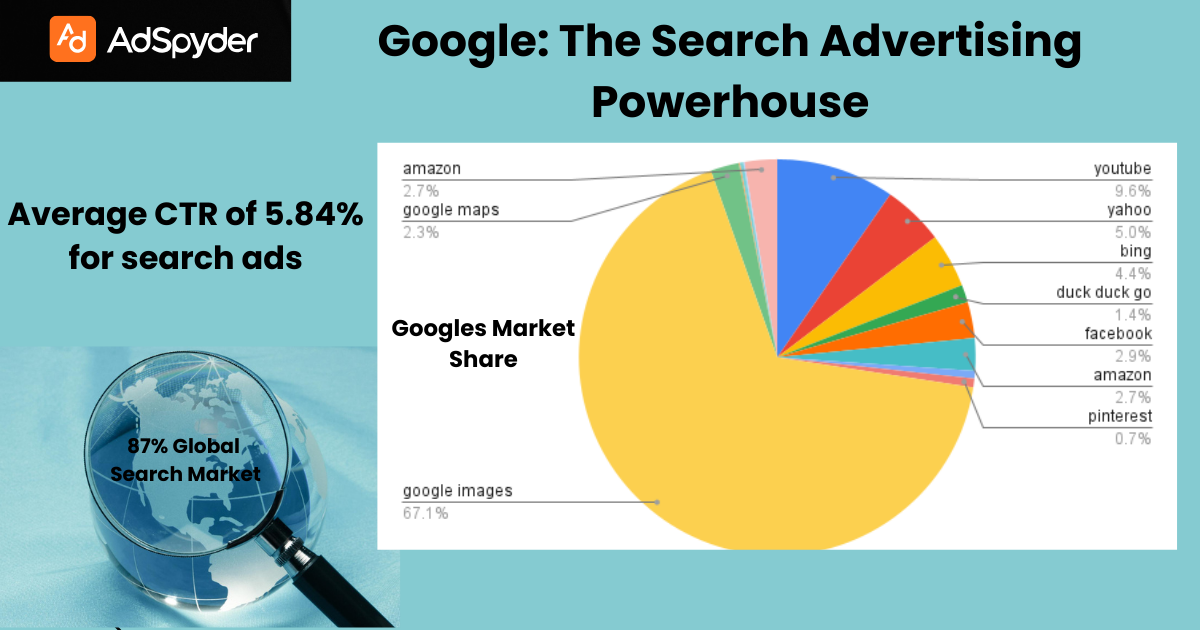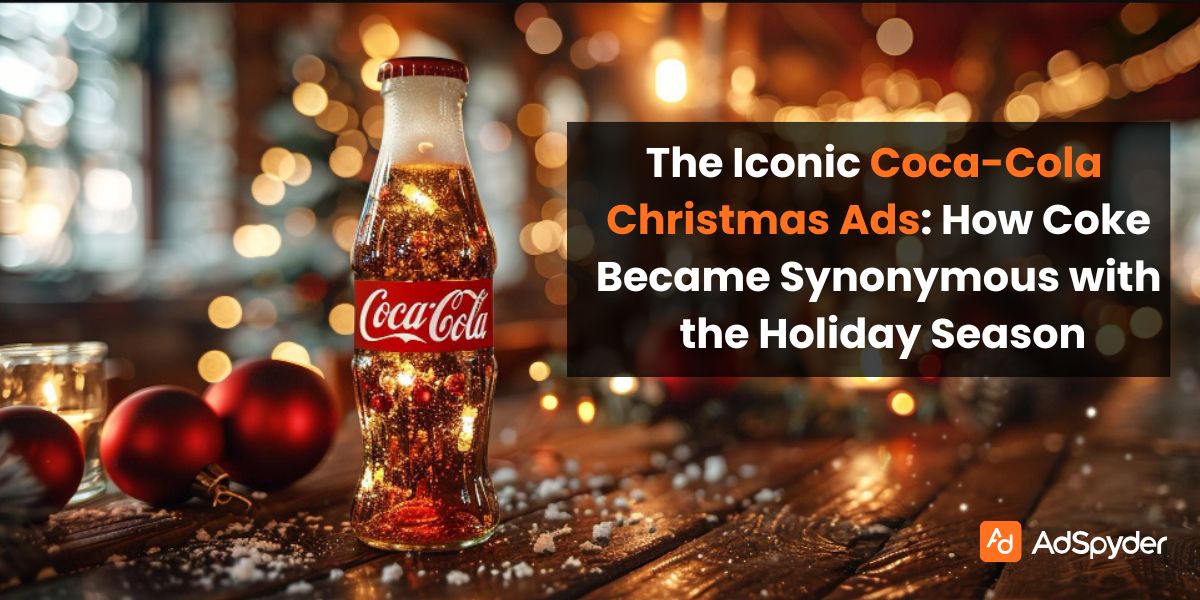In today’s dynamic digital landscape, advertising is an ever-evolving domain. One of the most prevalent and impactful trends that businesses are navigating is the gradual increase in advertising costs. These advertising costs directly impact the bottomline of companies. In this blog post, we will explore the multifaceted reasons behind the surge in ad costs, insights into the digital advertising landscape and shed light on the crucial role of optimizing ad spend in this competitive environment. Navigating the reasons for this surge in ad costs will also provide opportunities to reduce ad costs.
Ready to Elevate your Marketing Strategy?
Surge in Ad Costs: Analysis of Ad Spend Trends

The surge in ad costs is fueled by the expanding user base of digital platforms, the shifting dynamics of consumer behavior. The growing competition among businesses vying for the attention of their target audience also contributes to this increasing cost of advertising. These elements have created a dynamic environment where demand for digital advertising space is high. This scenario is subsequently driving up ad costs.
Navigating Cost Per Click (CPC) Trends in Digital Advertising
Understanding Cost Per Click (CPC) is crucial for anyone diving into digital advertising. Recently, we’ve seen some significant shifts in CPC trends that every advertiser should be aware of. As digital marketing evolves, staying on top of these trends can substantially affect how effectively you reach your target audience and manage your advertising budget. Understanding these trends will also shed light on strategies to counter this rising costs.
Analysis:
- Rising CPC Trends: One major platform saw a 15% increase in average CPC compared to last year. This jump is largely because competition is heating up, especially in sectors like e-commerce and finance, where CPCs are usually the highest. With increased internet access and visible benefits of online advertising, many brands and paid performance marketers are entering this online advertising space. Advertisers in these sectors are bidding more aggressively, driving up costs as they vie for consumer attention.
- Continued Relevance: Another big player reported a 10% rise in CPC. This just goes to show that this platform remains a key spot for advertisers. Factors like ad relevance, who you’re targeting, and how you bid play a big role in this. As advertisers fine-tune their campaigns, understanding these nuances can lead to more effective ad placements and better engagement rates.
Benefits & Impact:
- Competitive Landscape: Higher CPCs highlight just how competitive digital advertising has become, especially in the more lucrative sectors such as real estate. Advertisers need to be more strategic than ever to get the best return on investment. This means not just throwing money at the problem but understanding where and how to allocate your budget most effectively. This approach includes strategically allocating budget to campaigns that are likely to perform well based on insights on audiences.
- Platform Significance: The fact that CPCs are rising on major platforms signals their continued importance. Despite higher costs, these platforms are still effective for reaching your audience. Their ability to deliver precise targeting and high engagement makes them worth the investment. These platforms are widely popular and provide easy access to the target audience you are looking for. Advertising on these platforms is still the most effective strategy for your brand.
- Strategic Necessity: These trends underscore the importance of careful budget management and smart bidding strategies to navigate this competitive landscape effectively. By being strategic, advertisers can still achieve their goals without overspending. Gaining proper insights on what your audiences are looking for and timing your ads right will surely create an impact without increasing costs.
Actionable Tips:
- Monitor Trends: Keep an eye on CPC trends across different platforms so you can adjust your strategies as needed. Regularly reviewing these trends helps you stay ahead of the curve and make informed decisions.
- Optimize Ad Relevance: Make sure your ads are super relevant to your target audience. This needs to be done to boost click-through rates and possibly lower CPC. Relevant ads not only perform better but also improve your Quality Score on many platforms. This approach can lower your costs.
- Target Audience: Fine-tune who you’re targeting to reach the right people and improve ad performance. Using detailed audience segments and lookalike audiences can help you reach the most receptive viewers.
- Strategic Bidding: Use smart bidding strategies that balance cost with potential returns to get the best results. Consider automated bidding strategies offered by platforms that optimize for your specific goals. Strategic bidding also removes the need for manual intervention to maintain the ad campaign successfully.
- Budget Management: Manage your advertising budget carefully to make the most of your resources and avoid overspending, especially in competitive sectors. Allocate your budget in a way that supports both your short-term and long-term advertising goals.
Keeping up with CPC trends is essential for anyone looking to make a mark in digital advertising. By staying informed and being strategic, you can navigate the competitive environment and maximize your advertising impact. With the right approach, you can achieve your marketing objectives even as the landscape becomes more challenging. Knowing how the ad scenario is going will also provide new opportunities for ad cost reduction.
Google vs. Facebook: Dominance in Digital Advertising

The battle for supremacy in the digital advertising realm continues between two giants: Google and Facebook. Google’s stronghold on the global search market, capturing a staggering 87% share, solidifies its position as the undisputed leader in search advertising. Meanwhile, Facebook, with its expansive user base and sophisticated targeting capabilities, maintains its status as the go-to platform for social media advertising.
Analysis:
- Google’s Search Dominance: With an overwhelming majority of the global search market under its belt, Google stands tall as the primary destination for advertisers looking to reach audiences actively searching for products and services. Its robust advertising platform offers unparalleled reach and effectiveness for search-based campaigns. With several ad types and precise audience targeting options, advertisers can effectively promote their brands with reduced costs. Metrics for tracking Google Ad campaigns are also easy to track.
- Facebook’s Social Influence: Facebook’s extensive user base and advanced targeting options make it a powerhouse in social media advertising. Advertisers leverage Facebook’s platform to precisely target their desired audience segments, driving engagement and conversions through tailored ad campaigns. With Facebook advertising tools and metrics targeting options, marketers can use the full potential of the offerings of the platform and market it effectively.
Benefits & Impact:
- Google’s Reach and Precision: Advertisers benefit from Google’s extensive reach and precision targeting capabilities. This allows them to connect with users at the moment of intent. This results in higher conversion rates and a strong return on investment for search advertising campaigns. With various targeting options including geolocation and date-time, advertisers can use their ad budget judiciously. This, combined with Google’s vast network and ad types, marketers can reach all kinds of audiences without much effort.
- Facebook’s Engagement and Customization: Facebook’s vast user base and sophisticated targeting tools enable advertisers to create highly personalized campaigns that resonate with their target audience. The platform’s emphasis on engagement and social interactions drives brand awareness and loyalty among users. With Facebook’s audience targeting options, marketers can also target new audiences that are likely to engage with your ad campaigns. Facebook remains a go-to platform for advertising brands, thanks to these features.
Actionable Insights:
- Strategic Allocation: Understand the strengths of each platform and allocate advertising budgets accordingly. This helps maximize reach and effectiveness of the ad campaigns. Consider the objectives of your campaigns and choose the platform that aligns best with your goals. Also keep in mind the ad types for impact on audiences and costs associated with creating and setting up ad campaigns.
- Tailored Messaging: Craft tailored ad creatives and messaging for each platform to resonate with the unique audience demographics and behaviors. Personalization is key to driving engagement and conversions. Use specific insights from target audiences and devise ad messaging to improve brand recall and engagement.
- Continuous Optimization: Monitor campaign performance closely and make data-driven optimizations to improve results over time. Both Google and Facebook offer robust analytics tools to track performance and identify areas for improvement. Also check regularly for updates on these platforms and make necessary changes to the ad campaigns.
Google and Facebook continue to dominate the digital advertising landscape, each offering unique advantages for advertisers. By leveraging the strengths of both platforms and adopting a strategic approach to advertising, brands can effectively reach and engage their target audiences across the digital ecosystem. These approaches help in proofing against surge in ad costs.

In fact, the report unveils that a significant 73% of businesses allocate a substantial portion of their Facebook advertising budget to video ads. This trend aligns with the surging popularity of video ad formats. Meanwhile, Google’s search ads maintain an impressive average click-through rate (CTR) of 5.84%, highlighting their efficacy in driving traffic to websites.
Importance of Ad Spend Optimization
In the ever-evolving world of digital advertising, businesses are facing surge in ad costs. To counter this challenge, ad spend optimization has emerged as a crucial strategy. Recent reports reveal that businesses implementing effective ad optimization techniques can slash their ad spend by up to 20%. One such technique gaining traction is Enhanced Cost Per Click (ECPC), which utilizes machine learning to dynamically adjust bids based on conversion likelihood.
Analysis:
- Cost-Saving Potential: The implementation of ad optimization techniques can lead to significant cost savings, with potential reductions of up to 20% in ad spend. This presents a compelling opportunity for businesses to maximize their advertising budgets and achieve greater efficiency.
- Machine Learning in Action: Techniques like ECPC harness the power of machine learning to optimize bids in real-time, ensuring that advertising dollars are allocated to the most promising opportunities. This dynamic approach to bidding enhances campaign performance and drives better results.
Benefits & Impact:
- Efficiency and Effectiveness: Ad spend optimization encompasses various strategies beyond bid adjustments, including enhancing ad relevance, refining targeting options, and continuous performance analysis. By adopting a holistic approach to optimization, businesses can ensure that every advertising dollar is maximized for impact.
- Maximizing ROI: In today’s fiercely competitive landscape, prioritizing ad spend optimization is essential for businesses looking to achieve a higher return on investment (ROI). By optimizing campaigns for efficiency and effectiveness, businesses can stretch their advertising budgets further and achieve greater success.
Actionable Insights:
- Implement Optimization Techniques: Explore advanced ad optimization techniques like ECPC and other machine learning-driven strategies to maximize efficiency and reduce ad spend.
- Refine Targeting and Messaging: Continuously refine targeting options and ad messaging to ensure relevance and resonance with your target audience.
- Monitor and Analyze Performance: Regularly monitor campaign performance and conduct in-depth analysis to identify areas for improvement and optimization opportunities.
- Test and Iterate: Test different optimization strategies and iterate based on performance data to continuously improve campaign outcomes.
In today’s competitive advertising landscape, ad spend optimization is not just a strategy but a necessity. By leveraging advanced techniques and prioritizing efficiency and effectiveness, businesses can stretch their advertising budgets further and achieve greater ROI.
Surge in Ad Costs: Future Outlook and Strategies
Peering into the future of digital market research for advertising, it’s evident that embracing emerging technologies will be paramount. Predictions from the report indicate that by 2025, a staggering 80% of digital advertising will be influenced by artificial intelligence (AI). Advertisers must adapt to these technological shifts and explore innovative strategies to remain competitive.
Privacy changes, including shifts in user tracking and data protection regulations, will significantly impact ad targeting and measurement. Advertisers should focus on building first-party data, harnessing the power of automation, and embracing predictive analytics to make data-driven decisions.
Conclusion
In conclusion, the surge in ad costs insights into the digital advertising landscape is a trend that businesses must navigate strategically. Advertisers must stay well-informed about ad spend trends, CPC variations, and future strategies to thrive in this highly competitive environment. Ad spend optimization remains the linchpin, allowing businesses to make the most of their advertising budgets and ensuring that every advertising dollar invested delivers maximum impact and results.



